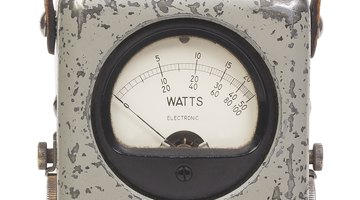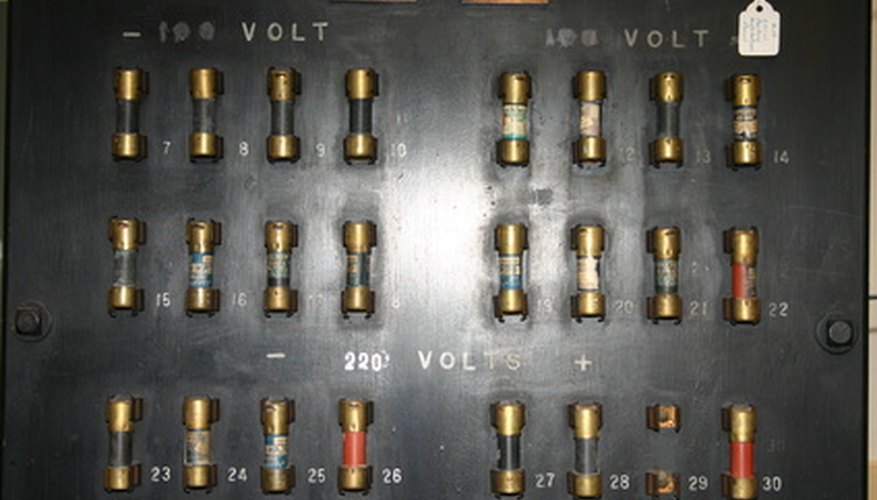A fuse is put into an electrical circuit to protect it from overloads. In a piece of electronic equipment, it can prevent damage to critical components by shutting off an overload. In a home, it is designed to prevent fires by shutting the power off in the event of short circuits or high voltage. Using a properly sized fuse is important in both situations. An undersized fuse will prevent adequate current reaching its destination. An oversized fuse can defeat its original purpose by allowing too much current to flow through a circuit.
Calculating a fuse size

Determine the operating voltage of the power source.

Determine the watts required by the circuit.

Use a calculator to divide the number of watts by the voltage. In the case of a 110-volt circuit, using 1200 watts, the calculation would be: 1200/110=10.9 amps. For a household circuit, a 15-amp fuse should be used in this circuit. A 10-amp fuse would "blow-out" consistently before the necessary power was delivered. A 20-amp fuse could overload wiring designed for a load of 1200 watts on a 110-volt circuit.
- Determine the operating voltage of the power source.
- A 20-amp fuse could overload wiring designed for a load of 1200 watts on a 110-volt circuit.
TIP
Nominal voltage for U.S. households is 110. Other power sources, like batteries will have their voltage rating printed or stamped on their case. For electronic components, the fuse size SHOULD be matched to the working amperage as closely as possible without starving the circuit. The " / " in the equation above represents the division symbol.
WARNING
Take wire gauge into account and match to fuses when sizing circuits. Pushing too much current through undersized wire is dangerous. See resource link below for guidelines.
